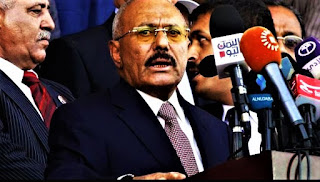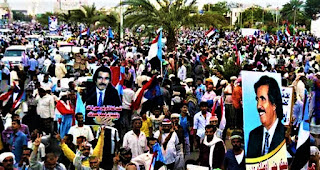Do you real know about Yemen? | History of Yemen
Do you real know about Yemen? |
History of Yemen
 |
| Do you real know about Yemen? | History of Yemen |
Medieval History
Yemen, regardless of how it is characterized or what its momentum political structure, has constantly controlled the southwestern tip of the Arabian Peninsula—the Babel Man-deb, stifle point to and from the Red Sea.
It is the nearest point to sub-Saharan Africa (particularly Djibouti and Ethiopia—with which it has had a long memorable affiliation. It additionally has been a noteworthy procession course for land exchange from the Indian Ocean to the Arabian Peninsula and on to the Mediterranean Sea.

The ongoing revelation of the old exchanging city of U-bar [in today Oman, close to the city of Salalah] was practiced utilizing remote detecting and satellite pictures. In scriptural occasions, Yemen was the home of the ruler of Sheba (identified with the Sabaean Empire).
In Roman and medieval occasions, it was the middle for the rewarding flavor exchange, particularly frankincense and myrrh.
Former North Yemen:
By the sixteenth century and again in the nineteenth century, northern Yemen was controlled in the urban communities by the Ottoman Empire and in innate territories by the Zaydi imam's suzerainty. The Ottoman Empire was disintegrated in 1918, and Imam Yahya, pioneer of the Zaydi people group, took control in the zone that later turned into the Yemen Arab Republic (YAR), or North Yemen.
 |
| King Of Yemen |
Underground resistance to Yahya started in the late 1930's, and by the mid-1940's significant components of the populace contradicted his standard. In 1948 Yahya was killed in a royal residence overthrow, and powers restricted to his primitive guideline held onto control.
His child Ahmad [Ahmad canister Yahya Hamidaddin] succeeded him and ruled until his own passing in September 1962. Imam Ahmad's rule was set apart by developing suppression, restored grating with the British over their quality in the south, and expanding strain to help the Arab patriot targets of Egyptian President Gamal Abdul Nasser.
Imam Ahmad canister Yahya
Imam Ahmad canister Yahya
(1891 – 18 September 1962)
Ahmad canister Yahya, child of Yahya Muhammad, was the penultimate lord of the Mutawakkilite Kingdom of Yemen from 1948 to 1962. He was viewed as an autocrat, and his primary spotlight was on modernizing the military.
 |
Former North Yemen
|
From 1958 to 1961, North Yemen was unified with Egypt and Syria in the United Arab States. Imam Ahmad's child Badr accepted power after Ahmad's demise yet was dismissed multi week later by armed force officials, driven by Colonel Abdallah al Sallal, who assumed responsibility for Sana and made the YAR. Promptly after taking force, the officials made the decision eight-part Revolutionary Command Council headed by Sallal.
Common war resulted between the royalist powers, bolstered by Saudi Arabia and Jordan contrary to the recently shaped republic, and republicans, upheld by Egyptian soldiers. In 1967 Egyptian soldiers were pulled back, and by 1968, after a royalist attack of Sana, a large portion of the restricting pioneers had accommodated. In 1970 Saudi Arabia perceived the YAR.
Former South Yemen:
English impact expanded in the southern and eastern segment of Yemen after the British caught the port of Aden in 1839. It was controlled as a component of British India until 1937, when Aden turned into a crown settlement, and the rest of the region was assigned a protectorate (regulated as the Eastern Protectorate and Western Protectorate).
By 1965 the vast majority of the ancestral states inside the protectorate and the Aden province itself had joined to frame the British-supported Federation of South Arabia.
 |
Former South Yemen
|
Throughout the following two years, two adversary groups—the Marxist National Liberation Front (NLF) and the Front for the Liberation of Occupied South Yemen (FLOSY)— battled for power. By August 1967, the NLF was responsible for most regions, and toward the part of the bargain the league officially crumbled. The last British soldiers were expelled on November 29.
On November 30, 1967, the People's Republic of Yemen, containing Aden and South Arabia, was announced. In June 1969, an extreme wing of the NLF picked up power. The nation's name changed to the People's Democratic Republic of Yemen (PDRY) on December 1, 1970.
Road to Unification:
By 1972 the two Yemenis were in open clash. The YAR got help from Saudi Arabia, and the PDRY got arms from the Soviet Union. In spite of the fact that the Arab League expedited a truce and the two sides consented to manufacture an assembled Yemen inside year and a half, the two Yemen's stayed separated.
The next years saw proceeded with agitation and struggle, coming full circle in the death of the leader of the YAR in June 1978. After a month, the Constituent People's Assembly chosen Lieutenant Colonel Ali Abdallah Salih as leader of the YAR.
Restored battling broke out in mid 1979, however in March the heads of condition of the two Yemenis consented to an arrangement in Kuwait swearing unification.

In April 1980, Abdul Fatah Ismail, who had been selected head of condition of the PDRY in December 1978, surrendered and went into outcast. He was supplanted by Ali Na-sir Muhammad, a previous head administrator. In January 1986, Ismail came back from outcast and continued a senior situation in the Yemen Socialist Party (YSP).
Over a month of brutality among Muhammad and Ismail's supporters brought about Muhammad's ouster and Ismail's demise. In February 1986, previous head administrator Haydar Abu Bakr al Attas was named leader of a recently framed PDRY government.
In October a general political race occurred in the PDRY for the national governing body. In the YAR's first broad political decision, held in July 1988, President Salih won a third five-year term.

In May 1988, the administrations of the YAR and PDRY consented to pull back soldiers from their common outskirt, make a peaceful area, and permit simpler fringe intersections for natives of the two states. In May 1990, they concurred on a draft solidarity constitution, which was eventually endorsed by choice in May 1991.
The Republic of Yemen was authoritatively announced on May 22, 1990. President Salih of the YAR moved toward becoming leader of the new republic; Ali Salim al Baydh, secretary general of the Central Committee of the YSP was named VP; and PDRY President al Attas was named head administrator.
Al Attas drove a transitional alliance Council of Ministers whose enrollment was partitioned between the General People's Congress (GPC; the gathering supporting President Salih) and the YSP (the gathering supporting Vice President al Baydh).





No comments: